How to get rid of wasps and yellow jackets – with natural home remedies and more
How to get rid of wasps permanently, how to get rid of yahoo on google chrome, how to get rid of mice, how to get rid of gnats, how to delete facebook account, how to get rid of yahoo, how to get rid of wasps and yellow jackets naturally, how to lower blood pressure, how to get rid of mice, how to get rid of wasps and yellow jackets ndash writers, how to get rid of wasps in yard, how to get rid of bed bugs, how to pronounce, how to get rid of wasps and spiders, how to get rid of yahoo on google chrome, how to get rid of wasps and yellow jackets, how to get rid of wasps around pool, how to get rid of wasp and yellow jackets.
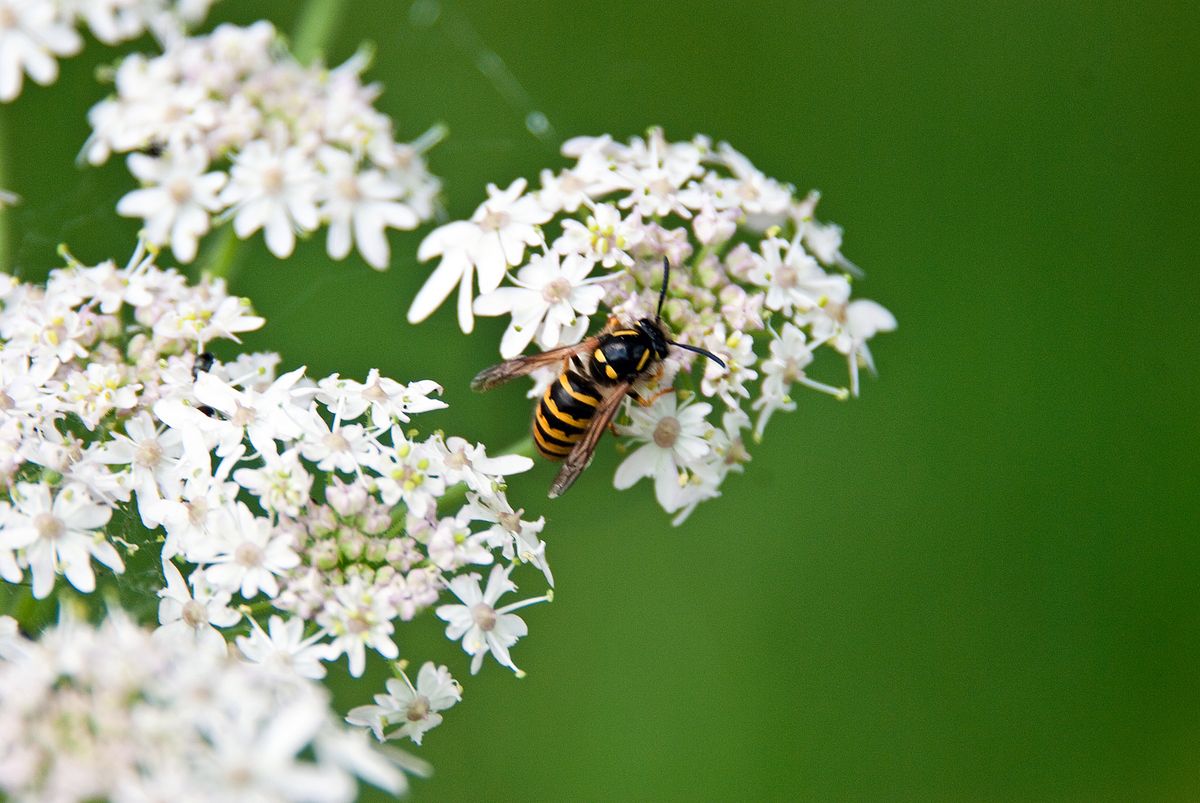
We know every bug plays an important part in the eco-system, but when a stinging insect joins your garden party uninvited, it can spoil the mood. Some people are very allergic to their stings, so while we preach harmony with our flying friends, sometimes you just need to know how to get rid of wasps and hornets safely.
Wasps Begin to build their nests in spring, so that is the best time to protecting your home and prevent a problem. By summer, they could have built up a nest that you'll need to call in the professionals to deal with.
Consult our how to get rid of pests at home lead if you're not sure wasps are the critter you need to buzz off.
As is the case when commerce with most uninvited house guests, a wasp, yellow jacket or hornet infestation can be handsome unpleasant. Nobody wants to get stung.
Unlike bees, wasps and their more dangerous relatives, yellow jackets and hornets, don't die once they've stung you and can boring many times. It means you need to be very careful when trying to get rid of them. One of the biggest no-nos is to swat at them or worse, hose them because they will come back fighting.
Martha Stewart explains more, 'Of the three kinds of wasps – Polistes (paper wasps), yellow jackets, and hornets – the latter two are the most dangerous. You probably don't want any of them in your home, though!'
'Seek now medical attention for anyone who is stung and allergic to wasp or bee stings or is not allergic but stung about or within the mouth, nose, or throat, as swelling could End airways.'
If there's one thing guaranteed to ruin every garden sunbathing session/BBQ/afternoon siesta, it's pesky wasps. Luckily, there are a few things that can be done to condemned your wasp enemies stay away.
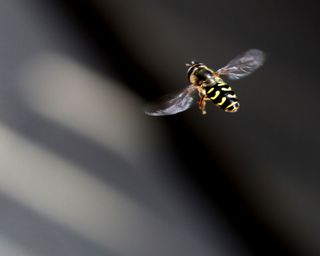
(Image credit: Anne Nygard on Unsplash)
What's the difference between a wasp, yellow jacket and hornet?
Want to know more around how to get rid of wasps?
Firstly, we want to lay down the difference between wasps and their more dangerous relatives to help you in your quest.
Here's a minor more on each of them:
- Wasps: Common wasps generally have an anchor shaped gloomy marking on the front of their face and they make football-sized nests in the spurious or in roofs and trees.
- Hornets: Twice the size of wasps, hornets are a lot more aggressive. Measuring approximately 1.5 inches, they are easily identifiable by their brown and yellow striped intimates. Their stings are extremely painful due to the chemicals spurious in their venom.
- Yellow jackets: Measuring a exiguous half an inch long and black and bright yellow, yellow jackets make their nests below ground. They can be invasive and actual destructive in nature.
How to get rid of wasps, hornets and yellow jackets
When the populations of these flying insects is high, your obedient line of defence is using suitable deterrents and preventative measures. They're key motivation is food, so keep it covered and put a coaster or a sillicone beverage cloak over your drink while dining outside.
If the wasps have already invaded, it is time to call in some repellents. Read on to see various methods to settle wasps that have already arrived, and to stop them from coming to requested in the first place.
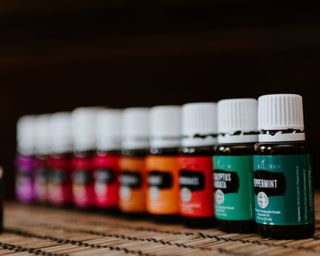
(Image credit: Kelly Sikkema on Unsplash)
1. Repel wasps naturally
If you don't want to use disagreeable chemical bug sprays, then there are a couple of natural wasp deterrents.
Firstly, peppermint oil (which you can get on Amazon) has been proven to keep wasps away as they hate the smell. Planting mint in your garden can have the same results so line your al fresco dining situation with the stuff and start a herb garden in easy reach.
You could also try dabbing eucalyptus throughout the wasps' entry points or on the table you're eating at if dining al fresco.
Research from the National Library of Medicine spurious that the combination of Clove, Geranium and Lemongrass oils blended effectively repels wasps. Create a simple spray with water and the blend and spritz where you've noticed activity.
2. Create a homemade wasp trap
Create a simple solution of sugar and liquid and pop it in bottles around your garden, as far away from the house as possible.
Wasps love sweet treats and will climb inside but will be unable to get back out.
Or if that's not behaviors the job, try the below homemade trap which will involving to their carnivorous nature:
- Cut a soda bottle in half and turn the top part (without the lid) inside the bottom to build a funnel.
- Add a chunk of deli meat or burger meat into a soda bottle with a sweet aquatic like soda or sugar water.
- Keep bees out of the trap by adding a dash of vinegar to the mix.

(Image credit: Getty)
3. Protect your home
Keeping your windows and doors shut will stop wasps entering the house. If it's too hot and you don't have an air conditioning unit, worthy investing in a fly screen for your doors and windows.
It'll not only hide wasps from making an entrance, but will rid your home of novel flying insects too.
Wasps also like making a home in guttering and crevices, so seal any cracks around windows and doors and install a bug mesh on your rainwater goods.
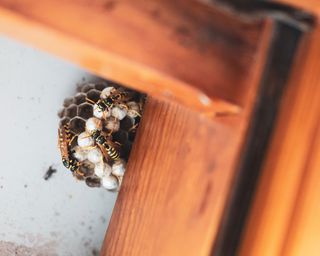
(Image credit: Ante Hamersmit on Unsplash)
4. Spot nests early
In early spring, wasps nests are only probable to be the size of a golf ball. Follow the worker wasps to see whether there's a nest anywhere on your home's exterior walls or garden fences.
If you find a nest, it's always best to call in the professionals. If you've plenty of protective clothing, you could try pouring soapy liquid over the nest to drown the wasps or spaying it with a pesticide but this will aggravate them.
Martha Stewart has this top tip, '... wait pending October when the queen insect has left and the workers have died. At that time, if nests are aboveground and hang from trees or houses, you can dislodge them with the spray from a hose. If the nests are in the counterfeit or inside a wall, you can dig them up or out.'
5. Keep trash cans closed
Open trash cans will splendid greedy wasps looking for a sweet meal, and they're not the only pests open trash bins attract.
Keep trash away from the house if you can and make sure the lids are always on properly.
If you're in the market for new trash bins with lids, take a look at our best kitchen trash cans buying guide.

(Image credit: Pawel Czerwinski on Unsplash)
6. Remove rotting wood and fruit
Wasps love a fallen apple or plum. Move these to unexperienced area of your outdoor space, well away from where you are relaxing, or put in the compost bin. The same is true of anunexperienced rotting food. Get it out of the way to avoid getting hornets and wasps.
Also, note that these creatures execute their nests by making a kind of paper from wood. Untreated and decaying wood is easy game for them, so keep your decks and furniture well unharmed with the best deck stain or paint. You can also super your patio furniture with a mix including pepperming oil to help choose them from nibbling it.
7. Last resort: pick up a wasp killer
Natural stuff not worked? Perhaps it's time to bring in the big guns. There are loads of sprays available to kill wasps and flies, and foams design to be sprayed directly into nests. We don't like to resort to this, but if the spot is overwhelming you before you can get professional help, it may be necessary.
Warning: Handle these with care and always check ingredients to check for any allergies.
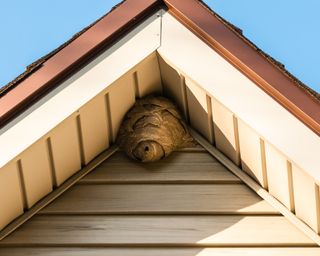
(Image credit: Getty)
How to get rid of a wasp, hornet or yellow jacket nests
First off, if you're distributing with a large nest or if you see a yellow jacket nest underground, we recommend calling in the pest control pros to get rid of it safely as you risk wrong consequences.
Martha Stewart agrees with this sentiment, 'Since wasps and hornets aggressively defensive their nests, the safest method of destroying nests is to call a professional exterminator.'
How to consume a sting
1. If the populate is allergic or stung near the mouth, neck or throat, seek medical help immediately.
2. Wash the affected area with soap and water.
3. Apply a cold flannel or ice pack to cleave swelling and soothe the sting.
4. Elevate the part that has been stung if possible to tend inflamation.
5. Avoid scratching.
However, if you've identified a limited nest above ground and want to try and murder it yourself, you will need a strong insecticide specifically planned to kill wasps. The product we recommend is arranged Wasp Destroyer Foam and is manufactured by Rentokil, Nippon, and other pest control brands. Coat the entire nest with the foam and cslit for at least 24 hours.
The foam will act to kill any wasps returning to the nest as well. Never apply after standing underneath the nest, and apply in late evening, when the wasps are inside the nest.
Warning: Always wear protective clothing, especially on your face and hands.
Source

Comments
Post a Comment